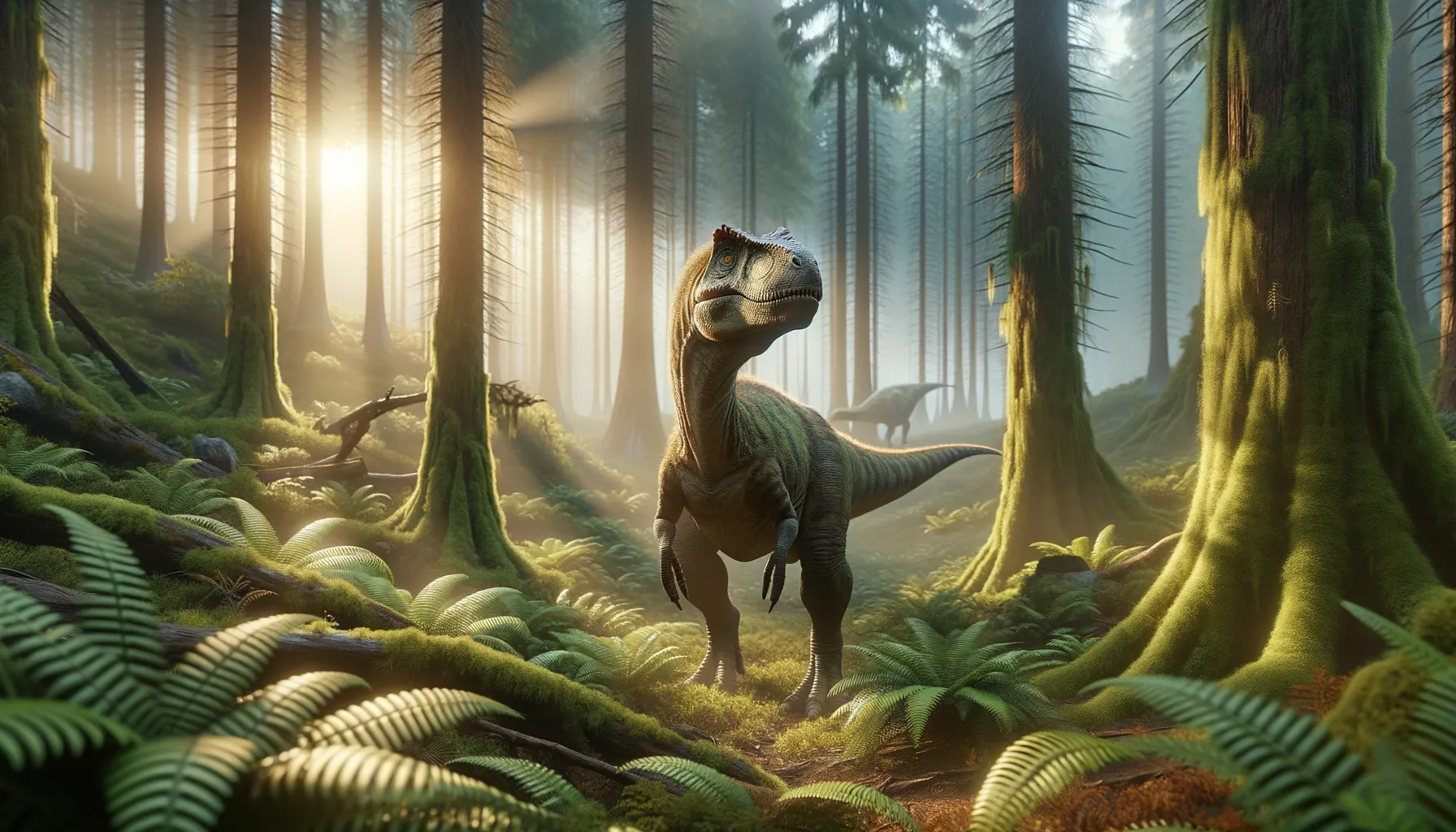
Shanyangosaurus
A nimble predator of ancient forests.
Period
Cretaceous
Length
Roughly 3 meters in length.
Height
Around 1.5 meters tall.
Weight
Approximately 50 kg.
Shanyangosaurus was a small theropod dinosaur that lived during the Cretaceous period. It was discovered in Shanyang County, China, and has provided valuable insight into small predatory dinosaurs of its time. With modest speed, Shanyangosaurus likely navigated dense, forested environments, contributing to its adaptability and survival. This dinosaur's fossil remains have helped paleontologists understand the diversity and complexity of dinosaur ecosystems.
Diet
Shanyangosaurus was likely a carnivore, feeding on smaller vertebrates and possibly insects. Its diet might have included small mammals, reptiles, and the occasional bird-like creature of its era.
Hunting
As a small predator, Shanyangosaurus relied on stealth and speed to capture prey. Its hunting strategy probably involved quick, surprise attacks in dense vegetation where it could approach its targets unnoticed.
Environmental challenges
Shanyangosaurus faced numerous environmental challenges, including competition for food with other small predators, as well as larger carnivores. Climatic shifts during the Cretaceous period could have affected prey availability, forcing it to adapt its hunting strategies. Changes in plant life might have influenced the structure of its habitat, impacting its movement and hunting efficiency. Additionally, surviving from early life stages through possible predation or environmental threats to adulthood posed significant challenges.
Speed
Likely modest, typical of small theropods.
Lifespan
Estimated life span could be around 10 years.
First discovery
First discovered in Shanyang County, China.
Fun Facts
- Shanyangosaurus was a small theropod dinosaur that lived in what is now China during the Late Jurassic period.
- The name 'Shanyangosaurus' means 'Shanyang lizard,' named after the region in China where its fossils were discovered.
- Despite being a carnivore, Shanyangosaurus was relatively small, measuring about the length of a modern-day large dog.
- Fossils of Shanyangosaurus have helped scientists understand the diversity of theropod dinosaurs in the Late Jurassic era.
- Shanyangosaurus lived around 160 million years ago, sharing its habitat with other prehistoric creatures.
- The discovery of Shanyangosaurus adds to the rich tapestry of dinosaur life that once thrived in ancient Asia.
Growth and Development
Shanyangosaurus experienced notable growth early in its life, rapidly reaching a size that reduced its vulnerability to predators. Like many theropods, it underwent key developmental changes that refined its hunting abilities and increased its resilience. As it matured, its growth rate slowed, focusing more on muscular development and agility. Insights from its fossils suggest adaptations consistent with a balanced need for both predation efficiency and environmental adaptation.
Habitat
Shanyangosaurus inhabited forested environments where undergrowth provided cover for ambush hunting techniques. The climate of its era supported a diverse ecosystem, allowing it to coexist with various other species. Being adaptable, this dinosaur might have thrived in varying geographical zones within its principal area of discovery. Water sources in its habitat were essential not only for hydration but also as potential hunting grounds for unsuspecting prey.
Interaction with other species
Shanyangosaurus likely competed with other small predators for food and territory, leading to diverse interaction dynamics. Its presence would have shaped the predator-prey relationships within its ecosystem, possibly keeping certain prey populations in check. It could have scavenged when opportunities arose, interacting indirectly with larger carnivores. Occasionally, it might have engaged in encounters with other species for dominance or prey theft.
Natural lifespan
Its natural lifespan was likely around 10 years.
Reproduction
Shanyangosaurus reproductivity involved laying eggs, likely in protected nesting areas. Like many dinosaurs, it might have demonstrated some level of parental care to ensure offspring survival. The species would have strategically chosen nesting sites to avoid predators and environmental hazards. Detailed fossil evidence of nesting behavior in similar theropods provides indirect clues into its reproductive strategies.
Social behaviour
Shanyangosaurus may have exhibited solitary or loosely-defined social behavior, given the competitive nature of small predators. Evidence from related species suggests possible temporary cohabitation for mating; however, sustained social groups were unlikely. Each individual relied heavily on personal space and selective interaction to optimize survival. Its social structure remained focused on efficient hunting, territory maintenance, and reproduction.
Fossil locations
Fossil remains of Shanyangosaurus were predominantly found in Shanyang County, China. These locations have provided important insights into the Cretaceous period environments and the regional diversity of dinosaur species. Continued exploration in these areas offers paleontologists a more detailed view of its habitat and evolutionary history. Discoveries in this region continue to be crucial for understanding theropod evolution in Asia.
